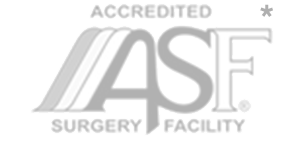Breast Augmentation Discussion
Inadequate breast volume may be due to a lack of development, and will be present after puberty, or may be due to involutional changes in the breast tissue after pregnancy, breast feeding and weight loss. Small to moderate weight loss may lead to a shrinkage of breast tissues, and can be well corrected by implants. With more massive weight loss, however, the inelasticity of the skin often results in significant sagging which would most likely require a breast lift at the same time as breast augmentation. This same situation can appear in some patients following pregnancy and breast feeding.
A small amount of breast sagging (“ptosis”) can be corrected by inserting an implant. As a “rule of thumb”, if the nipple is below the crease under the breast (“inframammary line”), some degree of breast lift will be required.
Almost all women demonstrate some degree of asymmetry of their breasts, and some may require different size implants.
A common misconception is that implants are placed “in” the breasts. They are not…they are placed behind the breasts.
There are a number of issues concerning breast implants that require in depth discussion and decision making before surgery. Breast implants have been around in their approximate configuration since the 1960’s, consisting of a silicone shell filled with salt water (“saline”) or silicone gel.
The most common problem encountered early in our experience with breast implants was that of hardening of the implants or “capsular contracture.” Any foreign object (breast implant, pacemaker, etc.) that is placed in the body’s tissues undergo envelopment by a layer of specialized fibrous cells which form what is called a capsule. Early implants were all made with a smooth surface which allowed these cells to bind and contract around the implant, causing it to feel hardened and unnatural when felt through the overlying tissues. The implant itself remained soft, but it was this “squeezing” by the capsule that caused the problem.
In the late 1970’s and early 1980’s, the frequent development of this problem led us to take those implants that developed this condition, and switch them from their position under the breast (“submammary”) and place them under the Pectoralis Major muscle (submuscular”). This is the bulky muscle under the breast which attaches to the upper arm. The concept was that with every movement of the arm away from the chest, the implant would be massaged or pushed to the limits of the capsule, keeping the implant soft. This was usually successful, and led most of us to start placing all implants in the subpectoral position from the start.
Unfortunately, symptomatic capsular contracture, although decreased in incidence, still continued to appear, despite this subpectoral position. This led to the development of roughened surface or “textured” implants around 1990. The theory was that if the surface of the implant was microscopically irregular, then the fibrous cells of the capsule would not be able to mechanically contract as easily. Ideally, there would also be an ingrowth of the capsular cells into the microscopic irregularities of the implant envelope, keeping it in place, and limiting the rotation of anatomically shaped implants which often occurred with smooth walled implants.
Both smooth and textured implants are presently available. When queried by this surgeon in 2009 as to the incidence of significant capsular contracture in their studies, the three implant companies all responded to me, stating that they saw 14% of smooth wall implant patients developing this problem.
A recent theory for the development capsular contracture is more complicated than this simple mechanistic approach. Recent studies seem to implicate the development of “biofilms” as a significant potential causative factor in the development of capsular contracture. In the case of breast implant surgery, a biofilm is a microaggregate of bacterial organisms that would development on the surface of an implant. Normal manifestations of an infection, such as redness or fever are not manifested. These biofilms could even occur despite the patient receiving oral and intravenous prophylactic antibiotics around the time of surgery. It has led us to irrigating the surgical pocket with antibiotic solutions, and to questioning some of our past surgical practices, such as dissecting through the breast tissue in order to place the implant. The normal breast glands and ducts can contain numerous bacteria, which could be exposed to the implant.
Breast Implants Past and Present
Silicone was first utilized in breast implants because it was one of the least irritating substances that could be placed in the body’s tissues, being first utilized in the 1960’s.
Silicone can be processed into three forms: a liquid, a gel, and a solid. There are numerous examples of solid silicone implants still utilized, especially for facial bone augmentation (chin, cheek, nasal implants).
There are numerous examples of silicone use in medicine. Pacemakers and Internal defibrillators or often encased in a thin layer of silicone. Most needles contain a thin layer to allow easier penetration into tissue. Intravenous catheters are silicone.
When considering the physical properties of silicone, it helps to use water as an example. Just as water can be a liquid, it can also form a “slush” or be in a solid form. The simple difference between these physical states depends on the number of bonds between the water molecules. Simply put, the same situation applies to silicone.
Silicone gel differs from a liquid or solid by the extent of bonding between the silicone molecules. The denser the bonds, the firmer the result.
Historically, most surgeons used silicone implants for breast augmentation, because they felt more like breast tissue than did the saline filled implants, especially in thin individuals. Moreover they did not deflate as saline implants possibly could.
The newest gel implants are firmer and more form stable than the earlier models. One could cut one in half, place it on a table, wait a year, and return to find no change in the form or cut surface of the implant. These newer models are often termed “cohesive” to describe the increased number of cohesive bonds between the silicone molecules.
The Silicone Gel Controversy
In the early 1990’s, a small group of patients with silicone implants felt that their implants were possibly related to their development of rare, autoimmune type diseases. Thus sparked the “Silicone Gel Controversy”.
The FDA was criticized for never having carried out lengthy clinical studies on breast implants back in the 1960’s. This led to the FDA removing all implants, both saline and silicone gel from the open market, and initiating formal clinical studies on their usage. They picked Plastic Surgeons from around the country, and allowed them to carry out clinical studies, formally following those patients for up to 15 years and more.
Dr. John Zimmermann was a study coordinator from 1991 until 2006, participating in twelve clinical studies for both saline and gel implants.
In 2006, the FDA released all implants back onto the open market, having demonstrated no relationship between silicone gel breast implants and autoimmune disease.
In addition to the formal FDA studies, there were approximately 4500 studies carried out around the world that looked at silicone gel and autoimmune disease. Not one study demonstrated any potential relationship!
Your Consultation
Being open and honest about your desired breast size is one of the single largest determinants of whether or not you will be happy with the surgical result. The consultation is a chance for you to assure that your needs are being communicated and understood by our team.
The Surgical Procedure
The procedure is performed as an outpatient, and takes one and a half to two hours on average. Normal activities such as driving can be resumed at one week, with a return to athletic activities at three weeks.
A Final Thought
Pregnancy, weight changes, and menopause may influence the appearance of the overlying breasts during the course of a lifetime.
Contact Dr. Zimmermann
If you have questions about breast augmentation, or if you would like to schedule a consultation with Dr. Zimmermann to talk about all aspects of this procedure, please contact us today.





